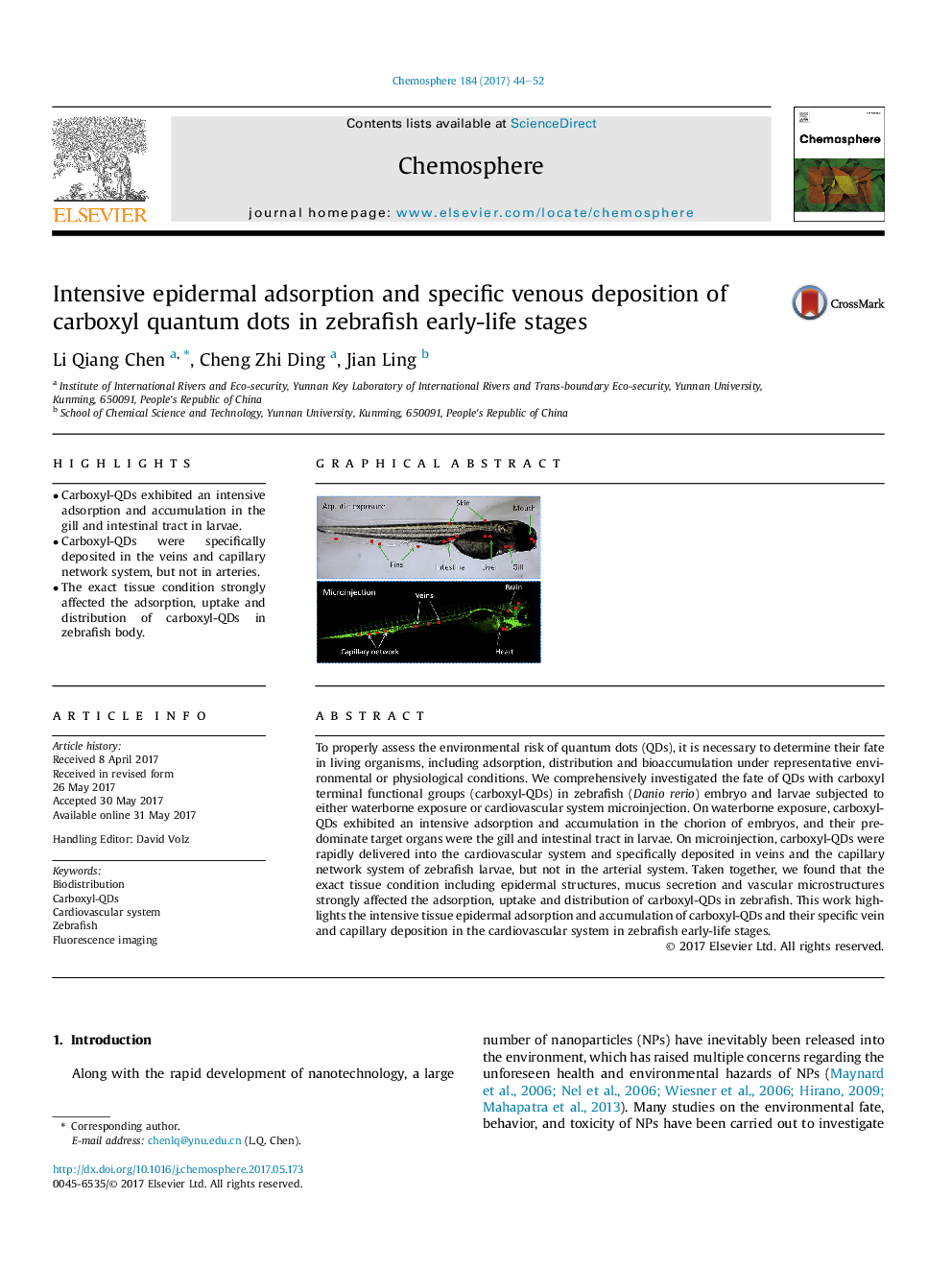| Article ID | Journal | Published Year | Pages | File Type |
|---|---|---|---|---|
| 5746247 | Chemosphere | 2017 | 9 Pages |
â¢Carboxyl-QDs exhibited an intensive adsorption and accumulation in the gill and intestinal tract in larvae.â¢Carboxyl-QDs were specifically deposited in the veins and capillary network system, but not in arteries.â¢The exact tissue condition strongly affected the adsorption, uptake and distribution of carboxyl-QDs in zebrafish body.
To properly assess the environmental risk of quantum dots (QDs), it is necessary to determine their fate in living organisms, including adsorption, distribution and bioaccumulation under representative environmental or physiological conditions. We comprehensively investigated the fate of QDs with carboxyl terminal functional groups (carboxyl-QDs) in zebrafish (Danio rerio) embryo and larvae subjected to either waterborne exposure or cardiovascular system microinjection. On waterborne exposure, carboxyl-QDs exhibited an intensive adsorption and accumulation in the chorion of embryos, and their predominate target organs were the gill and intestinal tract in larvae. On microinjection, carboxyl-QDs were rapidly delivered into the cardiovascular system and specifically deposited in veins and the capillary network system of zebrafish larvae, but not in the arterial system. Taken together, we found that the exact tissue condition including epidermal structures, mucus secretion and vascular microstructures strongly affected the adsorption, uptake and distribution of carboxyl-QDs in zebrafish. This work highlights the intensive tissue epidermal adsorption and accumulation of carboxyl-QDs and their specific vein and capillary deposition in the cardiovascular system in zebrafish early-life stages.
Graphical abstractDistribution of carboxyl-QDs in zebrafish larvae.Download high-res image (328KB)Download full-size image
